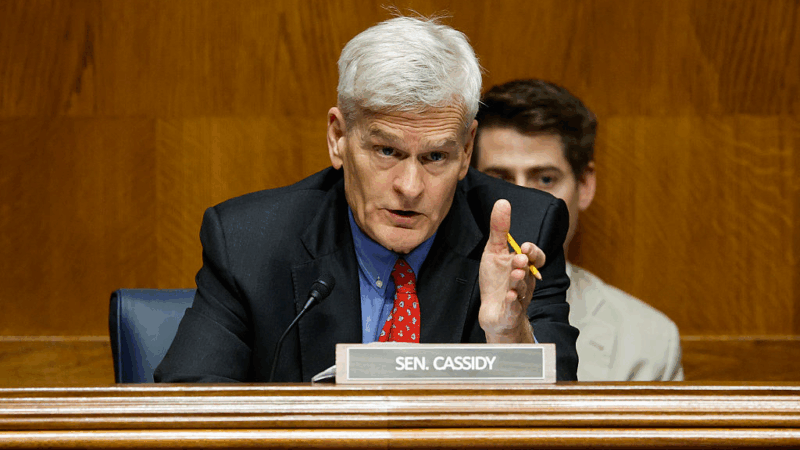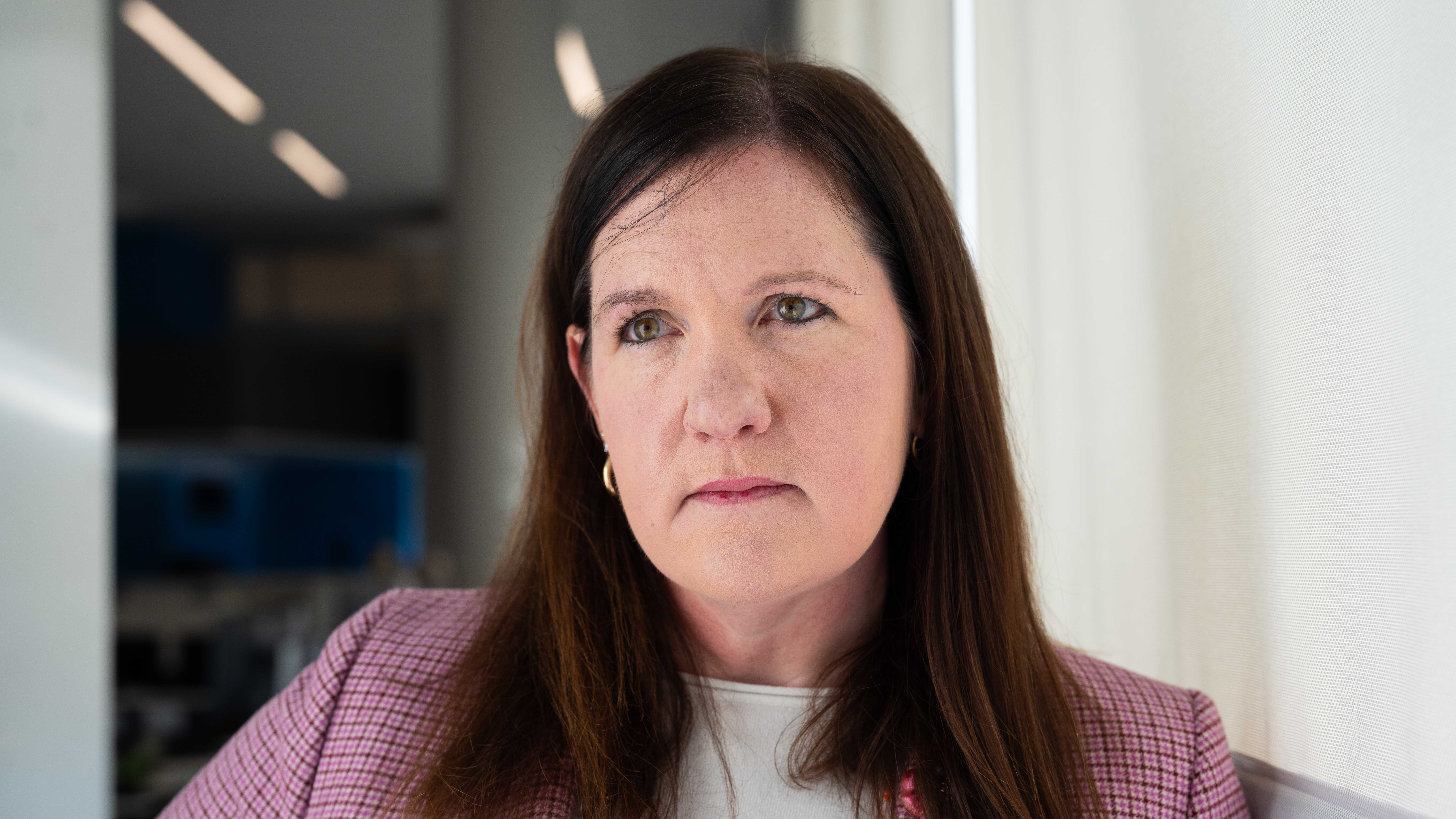Divorce lawyers say it’s a seasonal business. Here’s why
Kirk Stange keeps a close eye on the calendar — and right now, he’s enjoying the summer break.
Stange isn’t a student. He’s a family law attorney with 25 years in the business. During a recent interview, he told NPR he has noticed a pattern: Divorce filings hit two peaks per year — one in late summer and the other in early spring.
“It’s a very seasonal business,” the divorced father of two said, adding that it’s similar to the rush CPAs face come Tax Day in April.
Stange’s firm has 27 offices across nine states, and he’s been keeping meticulous records on the influx of new clients for the last decade. “Every year we see the same thing, no matter what state we’re looking at,” he said.
While January is often referred to as “divorce month,” largely driven by New Year’s resolutions, Stange said it’s one of the slowest months of the year for the lawyers at his firm.
“In December and January, parties just don’t tend to initiate divorce and family law proceedings,” he said, adding that “it’s a drop-off of 50%.”
“Whether they’re celebrating Christmas or Hanukkah or Kwanzaa, and then New Year’s, folks typically put these cases on hold,” Stange said. “That seems to be true no matter what we do. We could spend money advertising and try to do things, but it just doesn’t work.”
Raiford Palmer, a divorce lawyer in Chicago, said he experiences these same annual patterns. “We’ve been in this business for over 30 years and our numbers back this up,” he said.
Most of his clients are people with children, so he said it makes sense that they are scheduling their splits for a time that’s less disruptive.
Once the holidays pass, there’s usually spring break to contend with, then family summer vacations. Only after those have tapered off, Palmer said, do unhappy married couples finally act — usually before the new school year begins.
“It continues kind of like a wave based on people’s life events,” Palmer said.
At his own firm he sees a drop of about 30% to 35% in divorce filings during those important family bonding times of year, he said.
Divorce is driven by “domestic ritual” calendar, according to a study
Lawyers aren’t the only experts with data indicating this pattern. A 2016 study from the University of Washington that analyzed divorce filing data across the state from 2001 to 2015, found that they “consistently peaked in March and August.”
The study examined data from all but two of Washington’s 39 counties, where marriages can be ended by mail.
Study author and sociology professor Julie Brines told the UW News that the legal proceedings may be driven by a “domestic ritual” calendar that revolves around winter and summer holidays.
“People tend to face the holidays with rising expectations, despite what disappointments they might have had in years past,” she said. “They represent periods in the year when there’s the anticipation or the opportunity for a new beginning, a new start, something different, a transition into a new period of life. It’s like an optimism cycle, in a sense.”
That, she hypothesized, keeps couples hanging on for at least a few more months.
“They’re very symbolically charged moments in time for the culture,” Brines added.
More divorce patterns have emerged over recent decades
Carol Lee Roberts, president of the Institute for Divorce Financial Analysts, dismisses the idea that discontented couples hold out on splitting up over sentimental reasons.
“The idea that divorces peak in March because it’s right after joint tax returns are filed, or every August because it’s the end of the summer and you’ve just come home from family vacations and just can’t take this for a minute more” is inaccurate, Roberts told NPR.
She said the number of filings in any given month doesn’t indicate much. “Many states have specific waiting periods before you can even serve the other party. Other states don’t have those types of rules,” Roberts said.
She also noted 2015 research showing that 37% of married people have been thinking about divorce for two years or more.
Overall, the number of divorces in the U.S. has continued to drop, from a rate of 4 divorces per 1,000 people in 2000 to 2.4 per 1,000 people in 2023, according to the Centers for Disease Control and Prevention. In 2023, Louisiana saw the fewest divorces with only 0.9 per 1,000 people; Illinois was second lowest with 1.2 per 1,000 people. Wyoming and Idaho were tied for the states with the highest rate, with 3.4 divorces per 1,000 people.
Roberts said a more important pattern that has emerged in recent decades is the average age of people getting divorced.
“The only demographic in the U.S. that has seen an increase in divorce rates are those people over age 50 … it has doubled since 1990. It has tripled for people over age 60 in the same period,” Roberts said.
Part of what is contributing to these so-called “gray divorces” is that people are living longer — and the fact that for many, it may be a second or third marriage that’s ending, according to Roberts.
And increasingly, she said it’s women who are filing to end their marriages.
“Part of the things we think contribute to that is that there’s increased financial independence, there is increased earning capability from women. And frequently, the woman is not only earning as much as a spouse, but there are many cases where the woman is now the primary breadwinner,” Roberts added.
A “bumper crop” of divorce cases on the horizon
For now, Stange, the family law attorney, is appreciating the benefits of the slow pace this time of year at his firm. But he said he’ll have to think about ramping up soon.
He’ll be spending more on marketing and hiring in about a month, when he expects to fill currently vacant positions to handle a surge in calls and new clients.
Not unlike a farmer, he joked that late summer is his version of the “bumper crop months of new cases.”
Here are the 2026 Golden Globe nominations
Marlon Wayans and Skye P. Marshall presented the nominees for the 83rd Golden Globes this morning. The awards ceremony will be held on Jan. 11, hosted by Nikki Glaser.
After Texas ruling, Trump and Republicans head to 2026 with a redistricting edge
Trump has prompted a redistricting race as he tries to maintain Republican control of the House in the 2026 elections. Democrats have fewer options to counter, as the battle heads into next year.
How China, not the U.S., became the main climate solution story in 2025
The U.S. has become a "side character" in the global story of renewable energy, experts say. China dominates the sector, with positive implications for the climate and their economy.
Zelenskyy heads to London for more Ukraine peace talks. Here’s what to know
The talks signal fresh support from European allies. But they follow stalled U.S. negotiations in Miami and comments from President Trump's son suggesting Washington is ready to pull back.
Republicans push high deductible plans and health savings accounts
A Republican call to give Americans cash instead of health insurance subsidies revives an old idea that has left millions with medical debt.
Supreme Court to hear case that could vastly expand presidential powers
The Supreme Court hears arguments in a case about President Trump's firing of a Federal Trade Commissioner. At stake is a 90-year precedent limiting the president's power over independent agencies.






